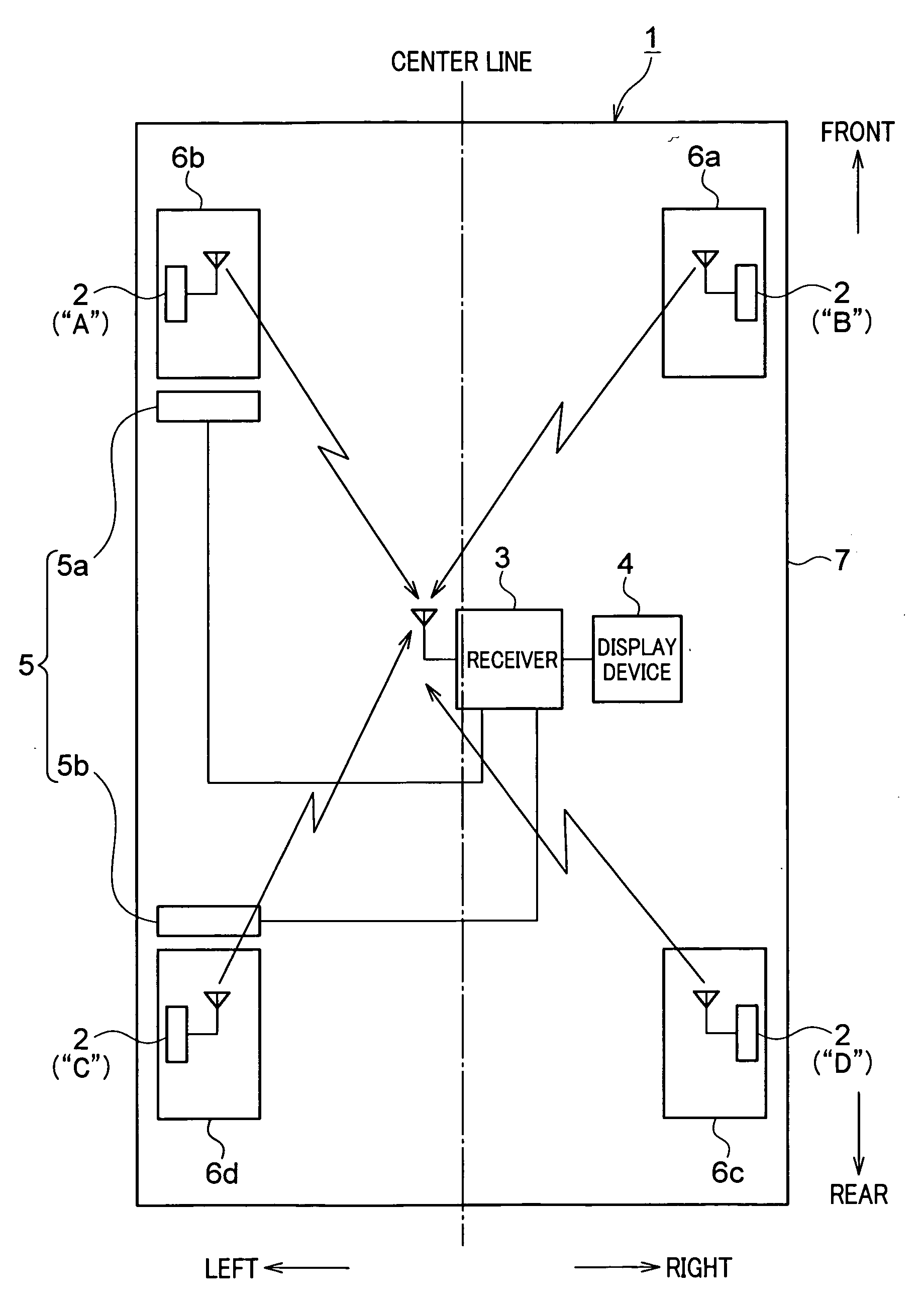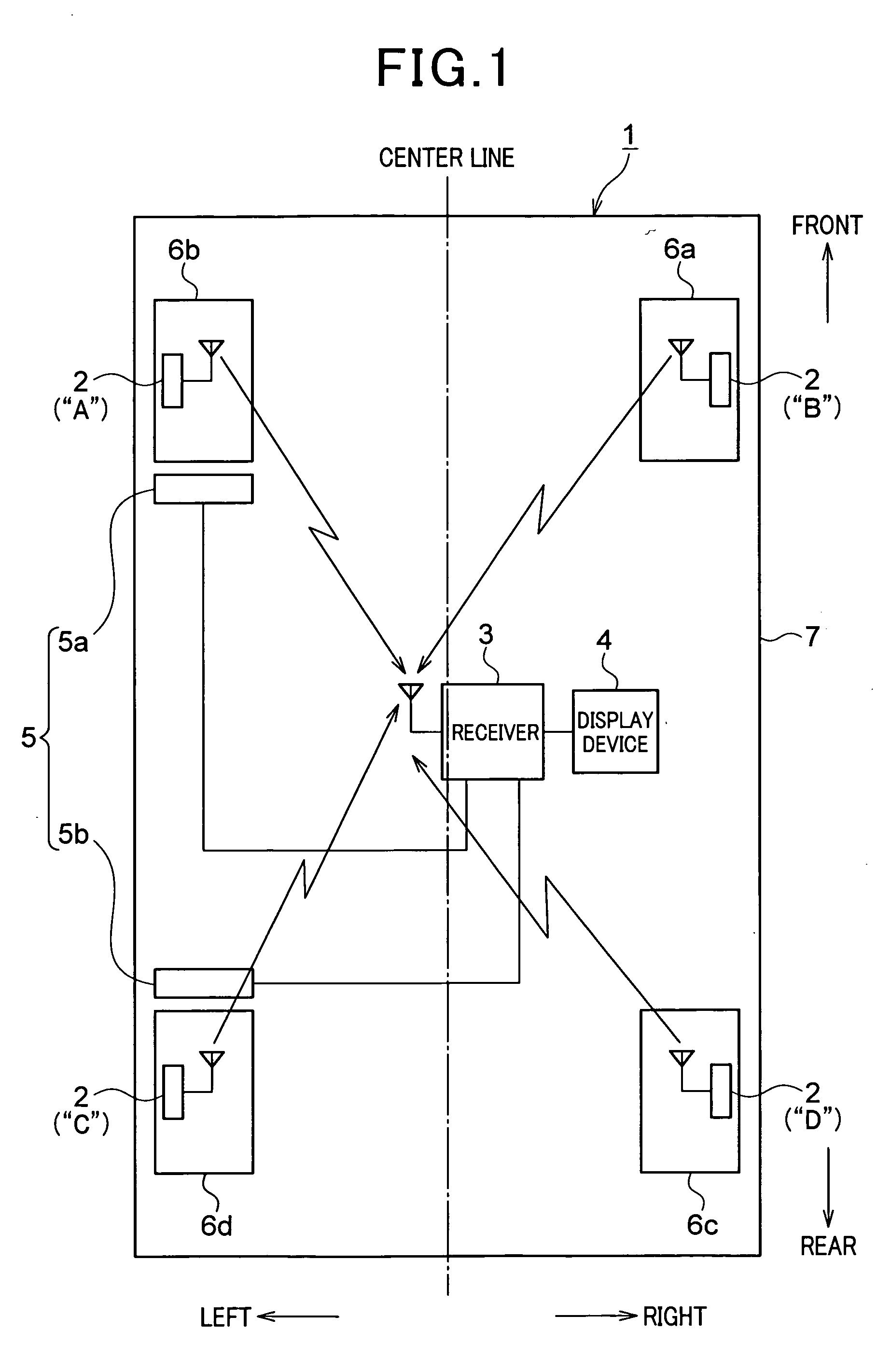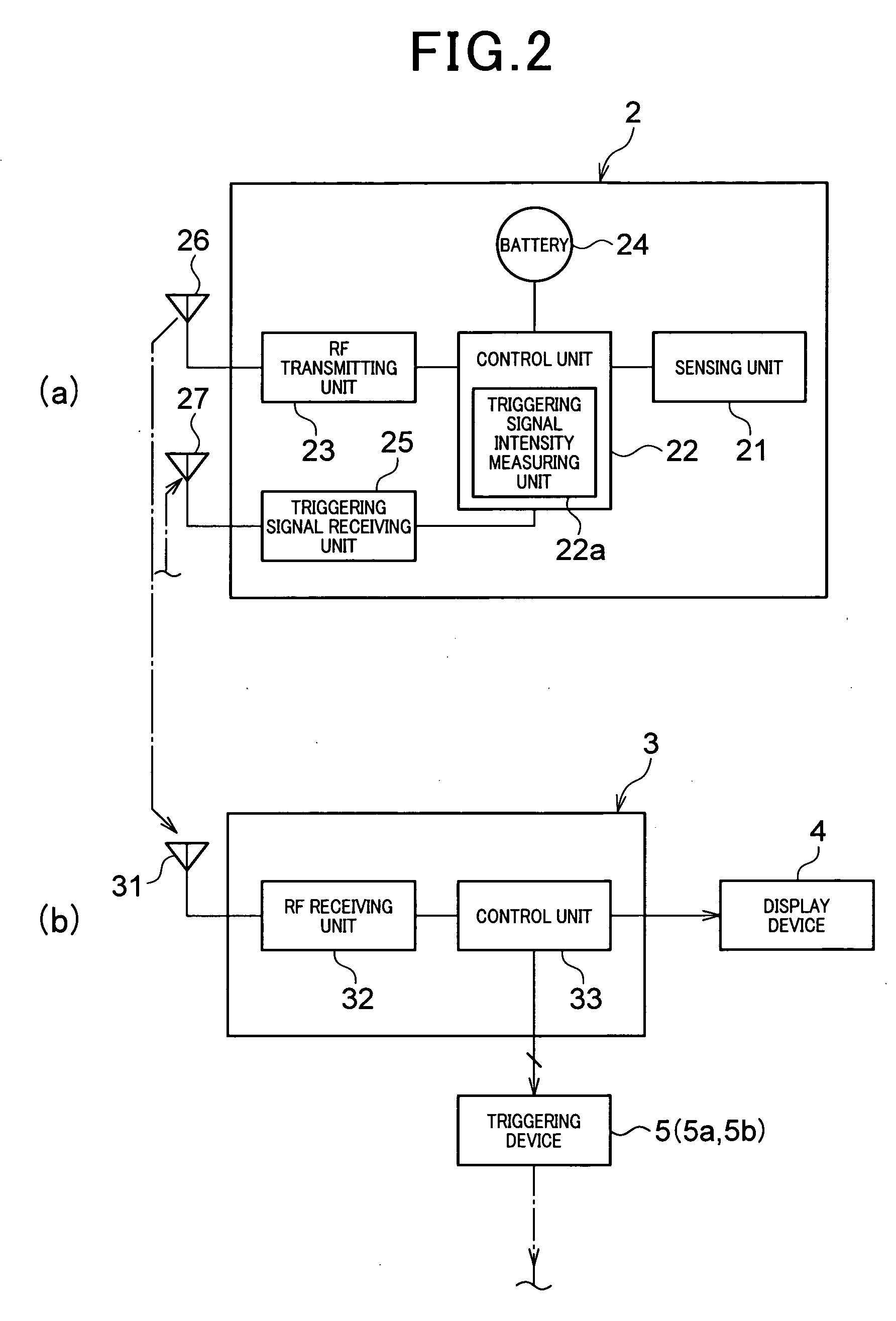Detection of wheel positions and detection of tire inflation pressure
a technology for detecting wheel positions and tire inflation pressure, which is applied in the direction of tire measurement, vehicle components, signalling/lighting devices, etc., can solve the problems of tire inflation pressure detecting apparatus not being able to cope with the position change of wheels, the position of individual transceivers in the vehicle cannot be detected, and the intensity of lf waves is weak
- Summary
- Abstract
- Description
- Claims
- Application Information
AI Technical Summary
Benefits of technology
Problems solved by technology
Method used
Image
Examples
first embodiment
[0034]A first embodiment of the present invention will now be described referring to the drawings. FIG. 1 is a block diagram generally illustrating a tire inflation pressure detecting apparatus, in which a wheel position detecting apparatus is applied, according to a first embodiment of the present invention. A direction toward an upper portion of the drawing sheet of FIG. 1 corresponds to a frontward direction of a vehicle 1, and a direction toward a lower portion of the drawing sheet of FIG. 1 corresponds to a rearward direction of the vehicle 1. Referring to FIG. 1, a tire inflation pressure detecting apparatus according to the present invention is described.
[0035]As shown in FIG. 1, the tire inflation pressure detecting apparatus, which is or is to be mounted on a vehicle 1, includes four transceivers 2 (i.e., each serves as a transmitter / receiver), a receiver 3, a display device 4, and triggering devices 5. In the present embodiment, the transceivers 2, the receiver 3, and the ...
second embodiment
[0088]Hereinafter will be described a second embodiment of the present invention. In the first embodiment described above, the triggering signals outputted from the first triggering device 5a have been received by only the transceivers 2 installed on the left- and right-front wheels 6a and 6b, while the triggering signals outputted from the second triggering device 5b have been received by only the transceivers 2 installed on the left- and right-rear wheels 6c and 6d. However, there is a possibility that the triggering signal outputted from the first triggering device 5a may also be received by the transceiver 2 installed on the left-rear wheel 6d, or the triggering signal outputted from the second triggering device 5b may also be received by the transceiver 2 installed on the left-Front wheel 6b. The present embodiment may enable reliable wheel position detection under such conditions. A tire inflation pressure detecting apparatus provided with the wheel position detecting apparatu...
third embodiment
[0111]Hereinafter will be described a third embodiment of the present invention. The third embodiment is different from the first embodiment in that it has another arrangement of the first and second triggering devices 5a and 5b.
[0112]FIG. 9 is a pattern diagram illustrating an arrangement of the first and second triggering devices 5a and 5b. As shown in the figure, the first triggering device 5a is arranged, as in the first embodiment, being offset from the center line of the vehicle 1 and being closer to the left-front wheel 6b than to the right-front wheel 6a. The second triggering device 5b is arranged also being offset from the center line of the vehicle 1 but, unlike the first embodiment, being closer to the right-rear wheel 6c than to the left-rear wheel 6d. Specifically, it is so arranged that a diagonal positional relationship is established between the left-front wheel 6b in the two front wheels 6a and 6b, which is located close to the first triggering device 5a, and the ...
PUM
 Login to View More
Login to View More Abstract
Description
Claims
Application Information
 Login to View More
Login to View More - R&D
- Intellectual Property
- Life Sciences
- Materials
- Tech Scout
- Unparalleled Data Quality
- Higher Quality Content
- 60% Fewer Hallucinations
Browse by: Latest US Patents, China's latest patents, Technical Efficacy Thesaurus, Application Domain, Technology Topic, Popular Technical Reports.
© 2025 PatSnap. All rights reserved.Legal|Privacy policy|Modern Slavery Act Transparency Statement|Sitemap|About US| Contact US: help@patsnap.com



